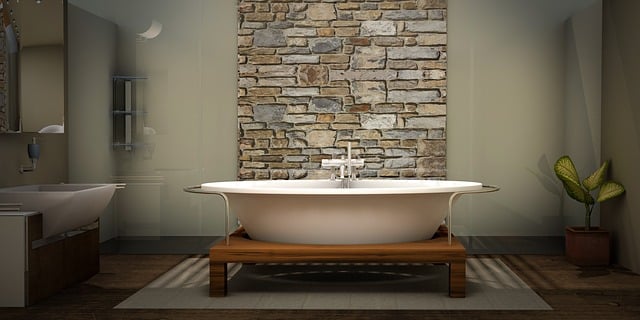Choosing low-flow showerheads for bathroom renovations is an intelligent move that conserves water, energy, and money while maintaining performance. Traditional showerheads use up to 5 gallons per minute, whereas low-flow models use 2.5 gallons or less, reducing water bills and environmental impact. Easy to install, these showerheads offer significant cost savings and contribute to a greener lifestyle without compromising on shower experience. Beyond water conservation, integrating low-flow technologies like efficient toilets, faucets, and appliances lowers utility bills and aligns with sustainability trends.
Looking to renovate your bathroom while reducing energy consumption? This guide explores practical, energy-efficient practices that transform your space into a sustainable oasis. From selecting high-efficiency fixtures like low-flow showerheads and faucets to implementing smart insulation and ventilation strategies, we provide insights for every step of the process. Discover how to incorporate eco-friendly materials and lighting solutions, ensuring both comfort and environmental responsibility without breaking the bank.
- Choosing Energy-Efficient Fixtures: The Low-Flow Revolution
- – Benefits of low-flow showerheads and faucets
- – Types of low-flow technologies available
- – How to select the right products for your renovation
Choosing Energy-Efficient Fixtures: The Low-Flow Revolution
Choosing energy-efficient fixtures is a key aspect of any bathroom renovation, and one of the most impactful changes you can make is switching to low-flow showerheads. These innovative devices have revolutionized water conservation, offering significant water and energy savings without compromising on performance. Traditional showerheads use up to 5 gallons of water per minute, but low-flow models typically reduce this to 2.5 gallons or less, while still providing a satisfying shower experience.
Low-flow showerheads are easy to install, often requiring only a simple swap with your existing fixtures, and they pay for themselves over time through reduced water bills. Moreover, the environmental benefits are substantial, as less water usage translates to lower energy demands for heating and pumping, contributing to a greener, more sustainable lifestyle.
– Benefits of low-flow showerheads and faucets
Low-flow showerheads and faucets are a simple yet powerful tool for achieving significant energy and water savings in your bathroom renovation. These devices operate by reducing the water flow without compromising on pressure, ensuring an efficient and enjoyable showering experience. By installing low-flow fixtures, you can cut down on both your water bills and carbon footprint, as less water means less energy is required for heating and pumping.
One of the key advantages is the potential for substantial water conservation. Traditional showerheads can use up to 20 liters of water per minute, whereas low-flow models typically reduce this to 5-7 liters or even less. This not only helps preserve this precious resource but also contributes to a more sustainable lifestyle. Moreover, many modern low-flow showerheads are designed with advanced technology, offering improved water distribution and a satisfying shower sensation, dispelling the common misconception that low-flow means less comfort.
– Types of low-flow technologies available
In the quest for energy-efficient bathroom renovations, one key area to focus on is the implementation of low-flow technologies. Low-flow showerheads are at the forefront of this movement, designed to significantly reduce water usage without compromising performance. These advanced fixtures incorporate special nozzles and aerators that mix air with water, creating a powerful yet gentle spray. The result is a substantial decrease in water consumption—often by as much as 50-70% compared to traditional models. This not only helps lower utility bills but also conserves this precious resource.
Beyond showerheads, various other low-flow technologies are available for bathroom renovation projects. Efficient toilets, for instance, feature advanced flushing mechanisms that use less water per flush, while low-flow faucets can drastically cut down on water wastage in daily routines such as brushing teeth or washing hands. Additionally, installing water-efficient appliances like high-efficiency washing machines and dishwashers further enhances the energy-saving capabilities of your renovated bathroom.
– How to select the right products for your renovation
When renovating your bathroom, selecting energy-efficient products is a smart choice that can significantly reduce water and energy consumption. Start with low-flow showerheads; these are game-changers in water conservation. They use advanced technology to provide a satisfying shower experience while using far less water than traditional models. Look for heads with a flow rate of 2.5 gallons per minute (gpm) or lower, ensuring you stay within recommended standards while still enjoying your daily shower ritual.
Beyond showerheads, consider efficient fixtures and appliances. Opt for low-flow toilets, which can save up to 1.6 gallons of water per flush compared to older models. Also, upgrade your faucet aerators to reduce water usage without compromising pressure. Remember that choosing the right products not only benefits the environment but also aligns with current sustainability trends, making your bathroom renovation a smart investment.
In conclusion, embracing energy-efficient practices in bathroom renovations is not just an eco-friendly choice but also a sensible one. By opting for low-flow showerheads and faucets, homeowners can significantly reduce water consumption without compromising on performance. With various technologies available, selecting the right products is key to a successful renovation that benefits both the environment and your wallet. So, why wait? It’s time to dive into this revolution and transform your bathroom into a model of sustainability.
